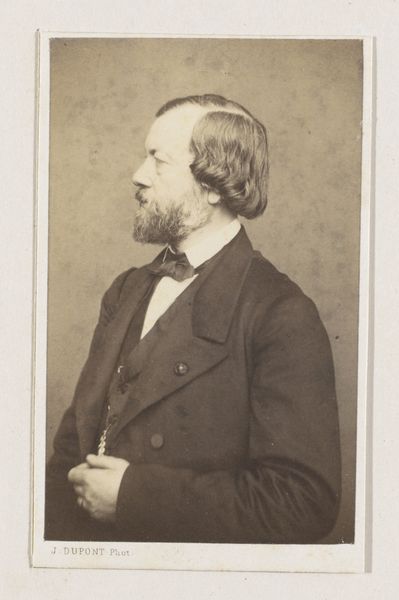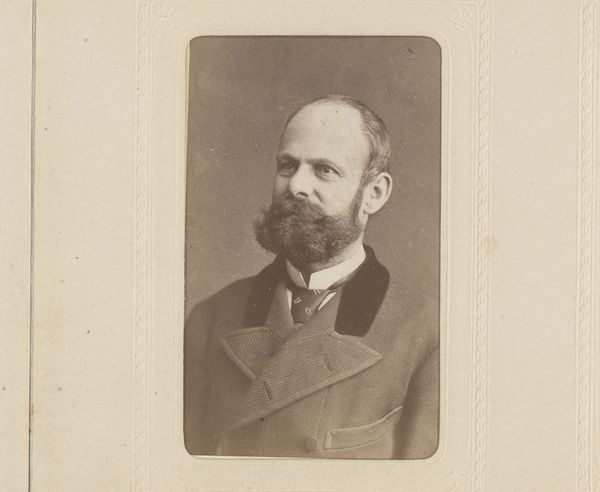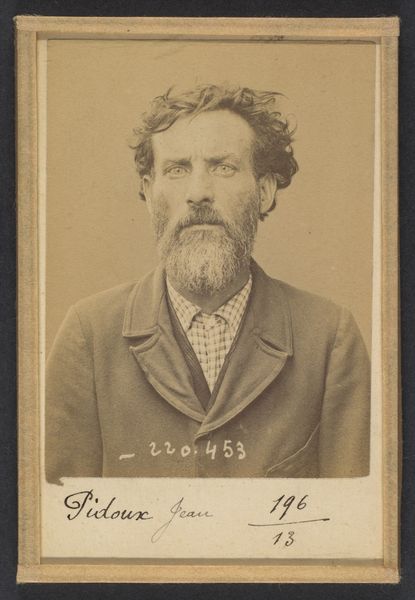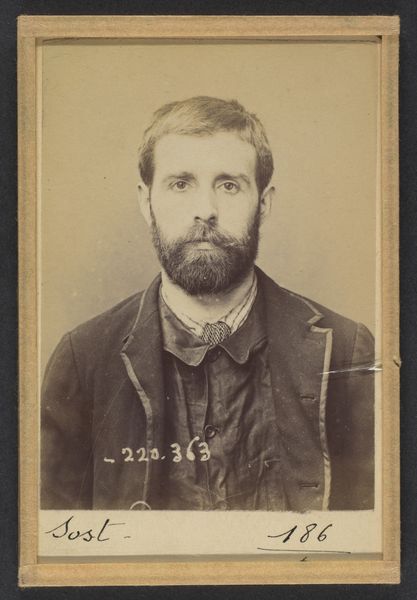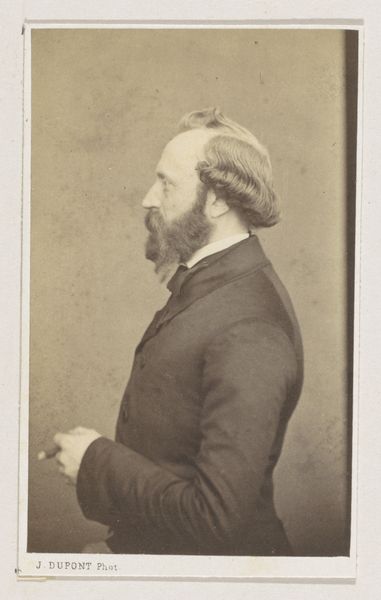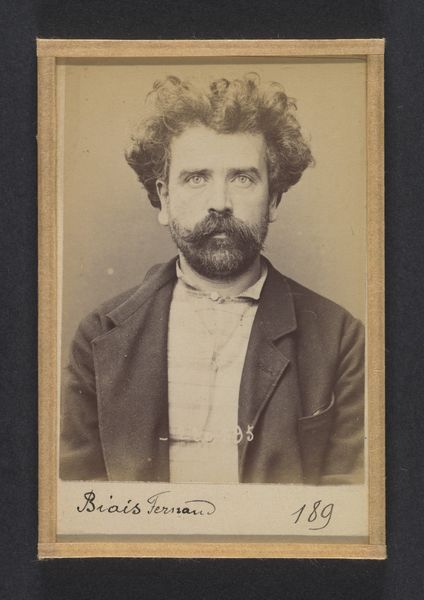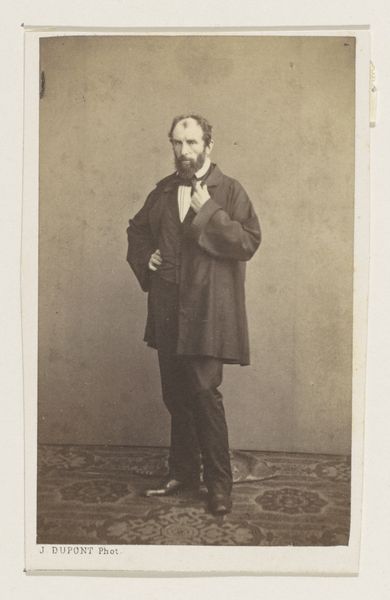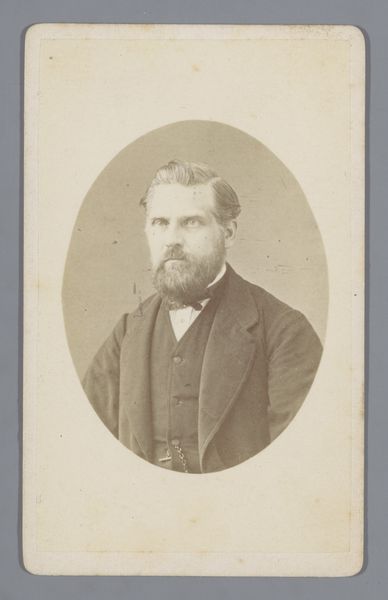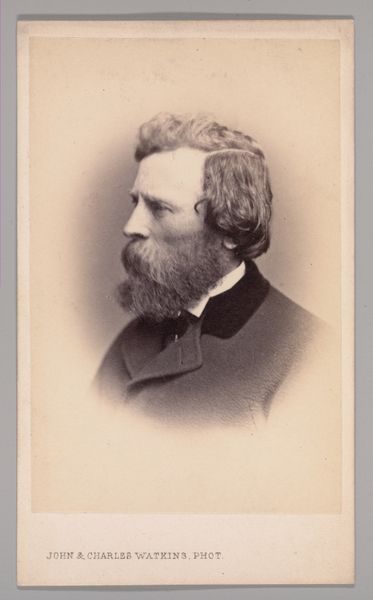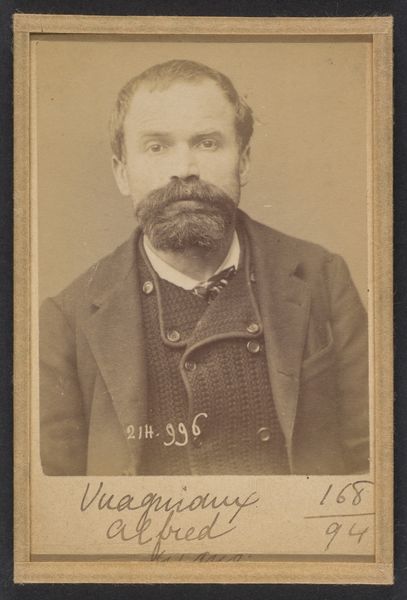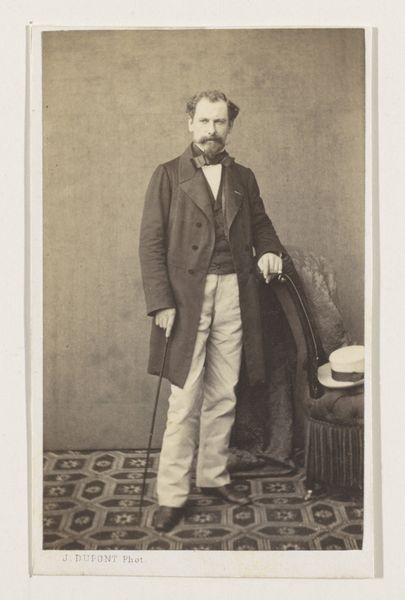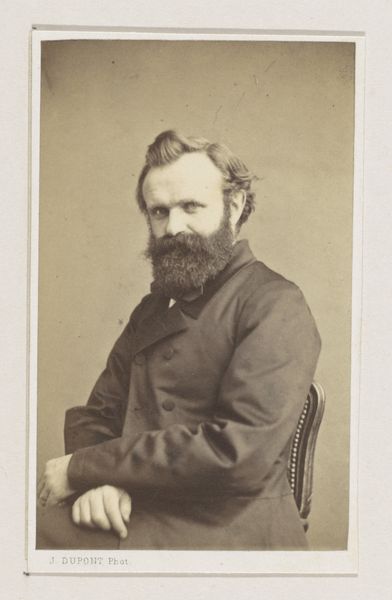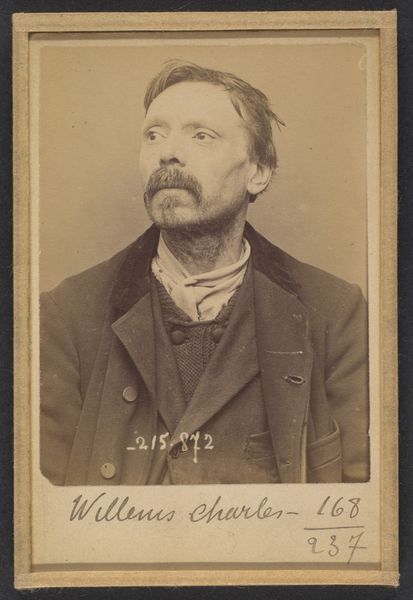
Henon. François. 52 ans, né le 5/5/42 à Lyon (Rhône). Caissier. Anarchiste. 2/7/94. 1894
0:00
0:00
photography, gelatin-silver-print
#
portrait
#
photography
#
gelatin-silver-print
#
academic-art
#
realism
Dimensions: 10.5 x 7 x 0.5 cm (4 1/8 x 2 3/4 x 3/16 in.) each
Copyright: Public Domain
Curator: This gelatin silver print, taken in 1894, is attributed to Alphonse Bertillon. Its full title is “Henon. François. 52 ans, né le 5/5/42 à Lyon (Rhône). Caissier. Anarchiste. 2/7/94." It's currently held in the Metropolitan Museum of Art. Editor: He has such arresting eyes! Direct, slightly haunted… There’s a story etched into his face. A bit tragic, don't you think? Curator: Well, the photograph, given its material context, forms part of Bertillon's "speaking likeness" system, aimed at standardizing criminal identification using photography, anthropometry, and detailed notes. Editor: Right, mug shots. But seeing the photograph within the frame of “criminality” seems… reductionist? The man's wearing a somewhat respectable coat, though maybe slightly worn. And a rather carefully tied bow tie. It seems like he’s taking care of himself despite the social circumstance. It also brings forward the interesting concept that “criminal” and “anarchist” may not be as intertwined or oppositional to other facets of this man as they were in this historical moment. Curator: The clothing choices and care would align with what we know about social class and its material expression through personal adornment during the period. Bertillon's technique treats everyone as a mere object, but your sensitivity towards this person suggests something more than objectification is still occurring through the mere act of observing it as the contemporary viewer. Editor: Precisely! You have this record of the man – job, political affiliation – juxtaposed against the formal rigidity of early photography, but all that breaks down under the weight of that gaze. Curator: The photographic process itself highlights issues of labor; there was the labor involved in his capture and documentation versus his possible social status as a day laborer or the labor associated with anarchist actions during a fraught political time. The frame of the gelatin-silver print almost becomes another set of imposed borders around this man’s being. Editor: So, beyond its context within the history of photography and criminology, we’re actually presented with an involuntary portrait, a raw intersection of social tension and human resilience that sparks immediate intrigue. I wonder about the personal items he cared about most? Curator: In that regard, these systems and artifacts reveal their power and fragility through the objects of photography. Editor: A haunting reminder of how multifaceted we all truly are. Curator: Absolutely.
Comments
No comments
Be the first to comment and join the conversation on the ultimate creative platform.
